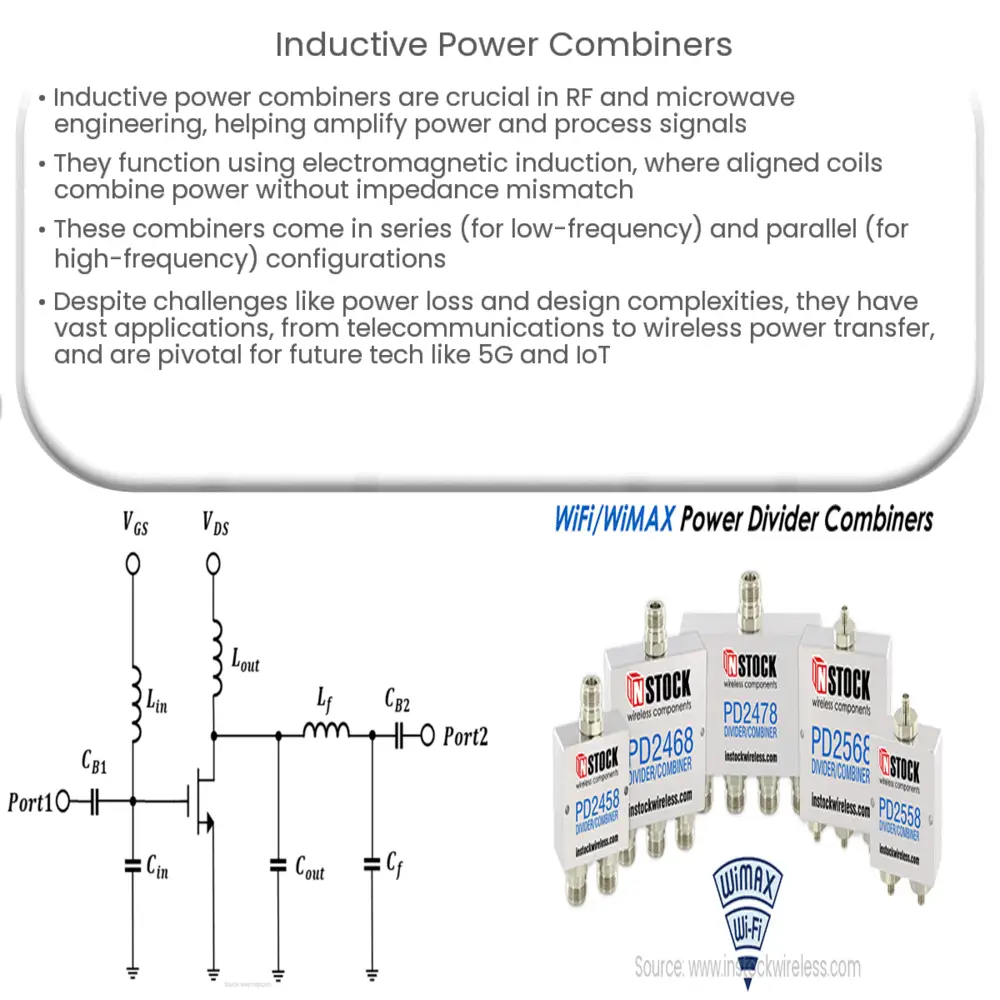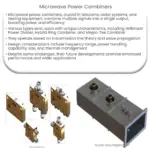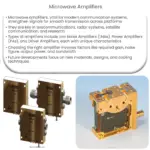Explore the world of Inductive Power Combiners, their working principles, types, applications, challenges, and future directions in RF engineering.

Understanding Inductive Power Combiners
Inductive power combiners, in the realm of RF (Radio Frequency) and microwave engineering, play an essential role in power amplification and signal processing. They combine the outputs of multiple amplifiers to achieve higher power levels while maintaining a balanced load.
Power combiners and dividers are passive devices that couple a defined amount of electromagnetic power in a transmission path. They’re employed in a myriad of applications, spanning from radar systems, satellite communications to wireless transmission and signal broadcasting.
The Working Principle of Inductive Power Combiners
Inductive power combiners primarily use the principle of electromagnetic induction. They consist of several inductively coupled transmission lines or coils to combine power. These coils are aligned such that the magnetic field produced by one coil can induce a voltage in the adjacent coil. The strength of the inductive coupling depends on the mutual inductance between the coils.
Through this principle, power from different sources (such as RF power amplifiers) can be combined in a balanced manner without causing impedance mismatch. This is particularly important in high-frequency applications where impedance mismatch can lead to power loss or damage to the components.
Types of Inductive Power Combiners
- Series Power Combiner: In a series power combiner, the outputs of multiple devices are connected in series. The input signals are added together, and the combined signal is then passed through a common load. Series power combiners are best suited for low-frequency applications.
- Parallel Power Combiner: A parallel power combiner connects the outputs of multiple devices in parallel. This configuration allows the signals to be added together, with the combined signal passing through a common load. Parallel power combiners are optimal for high-frequency applications.
It’s essential to note that inductive power combiners, like other power combiners, need to maintain isolation between different input ports. This is necessary to prevent signals from different sources from interacting and causing interference. This is usually achieved using suitable design methods and isolation resistors.
Applications of Inductive Power Combiners
Inductive power combiners are not limited to RF and microwave applications, but have an extensive range of utilization areas:
- Telecommunications: In telecommunications, inductive power combiners enable more efficient signal transmission by combining multiple input signals into one output signal. They’re integral to the infrastructure that supports wireless communication, radio broadcasting, and satellite technology.
- Research and Development: In the field of R&D, inductive power combiners are often used in testing environments, particularly in high-power microwave and millimeter-wave devices.
- Wireless Power Transfer: Inductive power combiners have also found a place in wireless power transfer technologies. They can be used in systems designed for wireless charging of devices, electric vehicle charging stations, and more.
Challenges and Future Directions
Despite their significant benefits, inductive power combiners face a few challenges. Firstly, achieving high efficiency can be demanding, especially in high-frequency applications. This often results from power loss caused by skin effect and impedance mismatches. Secondly, isolation among the input ports is another design challenge that needs meticulous attention.
With the advent of new materials and innovative design methods, it’s anticipated that the efficiency of inductive power combiners can be improved. As technology continues to advance, these devices will play an increasingly critical role in areas such as 5G communications, IoT (Internet of Things), and emerging technologies.
Conclusion
In conclusion, inductive power combiners are vital devices in RF and microwave engineering, contributing significantly to a wide array of applications in telecommunications, R&D, and wireless power transfer. Despite the challenges associated with their design, their continued evolution and refinement will undoubtedly be instrumental in powering future technological advancements. Their role in achieving high power levels, maintaining balanced loads, and preventing impedance mismatch underline their importance in a world increasingly reliant on efficient and effective wireless communication and power transmission.




